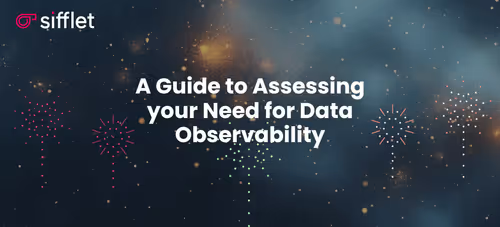Take Charge. Trace Anything.
Map out the relationships between your data assets, find what’s broken upstream and prevent downstream impacts with advanced lineage.
















Master Mapping
Map your asset dependencies from end-to-end. Modern UI makes it easy to look at lineage at both the table and column level.

Find Root Causes Fast
When data breaks, you need to know why and where. Sifflet’s lineage capabilities help you get to the root cause fast.

Take Care of Business
Assess the impact of data quality issues and prevent downstream trouble before it happens.
Precision Mapping
See how data moves through your system from its origin to final destination and all the stops in between.
- Map your data dependencies on day one with OOTB lineage enabled by integrations & SQL history parsing
- Benefit from last mile dependencies mapping with declarative lineage
- Work with column level granularity

Full Context At Your Fingertips
Everything you need to get to resolution, faster.
- Asset Health Status
- Documentation

Effortless Navigation & Exports
Investigate, collaborate and share your lineage.
- Navigate lineage effortlessly by folding and unfolding your map
- Screengrab lineage
- Export your lineage as a CSV

Reduce Downtime
Built for Everyone
Sifflet's lineage capabilities help reduce data downtime and break down silos between teams.
Looking for more?

A Guide to Assessing your Need for Data Observability
Every data-driven team dreams of creating "fireworks" with their insights. But without control, the "fire" of the modern data stack can spark chaos.
Discover if you're fighting fires or igniting fireworks:

Troubleshoot Faster with Data Observability
Ever feel like data issues are the silent productivity killer in your team?
Building trust in your data and solving problems fast shouldn’t feel like guesswork. Enter unified data observability: the game-changer for confidence, efficiency, and smooth operations.

End-To-End Data Observability With Declarative Assets and Lineage
Find out how to leverage Sifflet's declarative framework to give teams a more comprehensive data documentation and governance while simplifying the troubleshooting experience
Improve Data Quality Rapidly
Sifflet’s lineage features help you break silos between teams and get to the bottom of root causes, so the whole company benefits from better data quality.

































-p-500.png)
